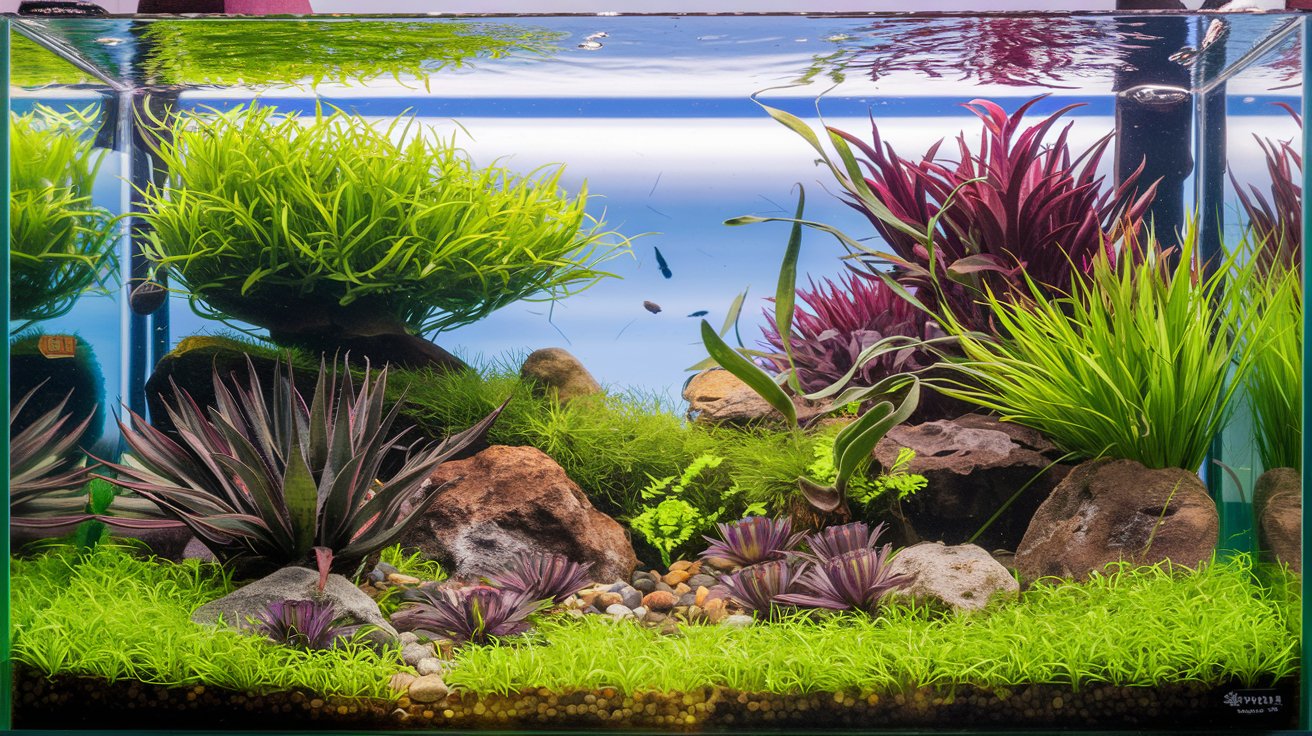Aquarium plants are a great method to increase the beauty of your aquarium. They do not just provide color and a vibrant appearance to your tank, but can also play an important role in maintaining the water’s quality. In this article we’ll look at the top fish tank plants to get started, the best way to maintain them and the benefits they bring to your aquarium fish.
Why Add Aquarium Plants to Your Tank?
Aquarium plants can provide many benefits to your fish as well as the tank’s ecosystem. Here are the top reasons to consider including them in your tank:
1. Improve Water Quality
Aquarium plants assist in bringing oxygen to the water. The plants absorb carbon dioxide, and then release oxygen in photosynthesis. This improves the water’s quality and ensures a healthy habitat to your pet fish.
2. Reduce Algae Growth
Live plants battle algae for nutrients, thus reducing the growth of algae. A well-designed tank can deter the spread of algae keeping your aquarium clean and healthier.
3. Natural Habitat for Fish
Aquarium plants create an natural habitat that gives fish a space to hide, explore and take a break. They are akin to the natural habitat, which reduces stress and encouraging healthier behaviour.
Top Aquarium Plants for Beginners
If you’re just beginning to learn about aquarium plants, you’ll want to begin with plants which are easy to keep. Here are a few of the most suitable beginner-friendly plants:
1. Java Fern
Java Fern is a popular choice because of the fact that it is low maintenance. It thrives in low or moderate light conditions and doesn’t require special fertilizers. You can use it to attach rocks or driftwood It is a great choice for a variety of uses and attractive to the eye.
2. Anubias
Anubias is another plant that is easy to grow that needs minimal maintenance. It develops slowly and is extremely adaptable to various conditions of water. The broad dark green leaves give a striking appearance on your tank.
3. Amazon Sword
Amazon Sword is a classic aquarium plant that is known for its sword-shaped, long leaves. It needs moderate lighting and thrives in a substrate that is rich in nutrients. It’s the perfect choice to create a lush, natural appearance to your aquarium.
4. Java Moss
Java Moss is an excellent plant for novices due to its extremely hardy. It is able to grow in a dim light and doesn’t require special care. It can be affixed to the surface or let it drift free, which makes it a useful addition.
5. Water Wisteria
Water Wisteria is fast-growing and perfect to fill up your tank. It assists in controlling the levels of nutrients in the water, and it can be tolerant of a variety of conditions. The delicate leaves give a unique look in your tank.
How to Care for Aquarium Plants
The care of aquarium plants is easy when you follow some basic guidelines. Here’s what you should be aware of:
1. Lighting Requirements
Aquarium plants require light to flourish. The majority of beginner plants require light that is moderate to low. You can choose to use either LED or fluorescent lighting specifically intended specifically for aquariums. It is important to ensure that you provide at minimum 8-10 hours of sunlight each day to ensure optimal growth.
2. Nutrient-Rich Substrate
The plants absorb minerals from substrate. Utilizing a substrate that is rich in nutrients or adding tabs for root growth will assist in encouraging healthy growth. Sand or gravel might suffice for certain plants, but soil that is nutrient dense is the best for root feeders such as Amazon Sword.
3. Regular Pruning
To ensure that your aquarium plants are healthy, make sure to trim the plants on a regular basis. Pruning is a way to control their growth and keeps they from shadowing other fish or plants inside the tank. Make use of the right scissors or shears to trim the dead and overgrown foliage.
4. Fertilization
While the majority of aquarium plants do not require a lot of fertilizer however, adding liquid fertilizers may boost the growth of your plants. Make sure you choose aquarium-safe fertilizers that supply essential nutrients such as potassium, iron and magnesium.
Common Problems for Aquarium Plants
Like all living things Aquarium plants are not immune to problems. Here are some of the most common issues and solutions:
1. Yellowing Leaves
The leaves of your garden begin to turn yellow, it could be caused by a deficiency of nutrients, specifically iron. You can add liquid fertilizers or root tabs to increase the levels of nutrients.
2. Algae Growth on Plants
Algae could develop within the leaf of plants when there’s too much light or excessive minerals in your water. To prevent this from happening, cut down on the exposure to light and ensure adequate filtering. It is also possible to introduce algae-loving fish such as otocinclus to alleviate the issue.
3. Slow Growth
If your plants aren’t growing at a rapid pace you may not be receiving enough sunlight or nutrients. Review your lighting and ensure you’re providing sufficient nutrients via substrates or fertilizers.
Final Thoughts on Aquarium Plants
Aquarium plants aren’t just attractive, but they are also beneficial for the overall health in your aquarium. From oxygenating your water to creating the fish with a natural habitat These plants are essential to creating an aquatic ecosystem that is healthy and vibrant. Begin with species that are beginner-friendly, such as Java Fern, Anubias, and Amazon Sword, and you’ll be well on the way to keeping a lush, green aquarium.


1 thought on “Aquarium Plants: A Complete Guide for Beginners 2025”